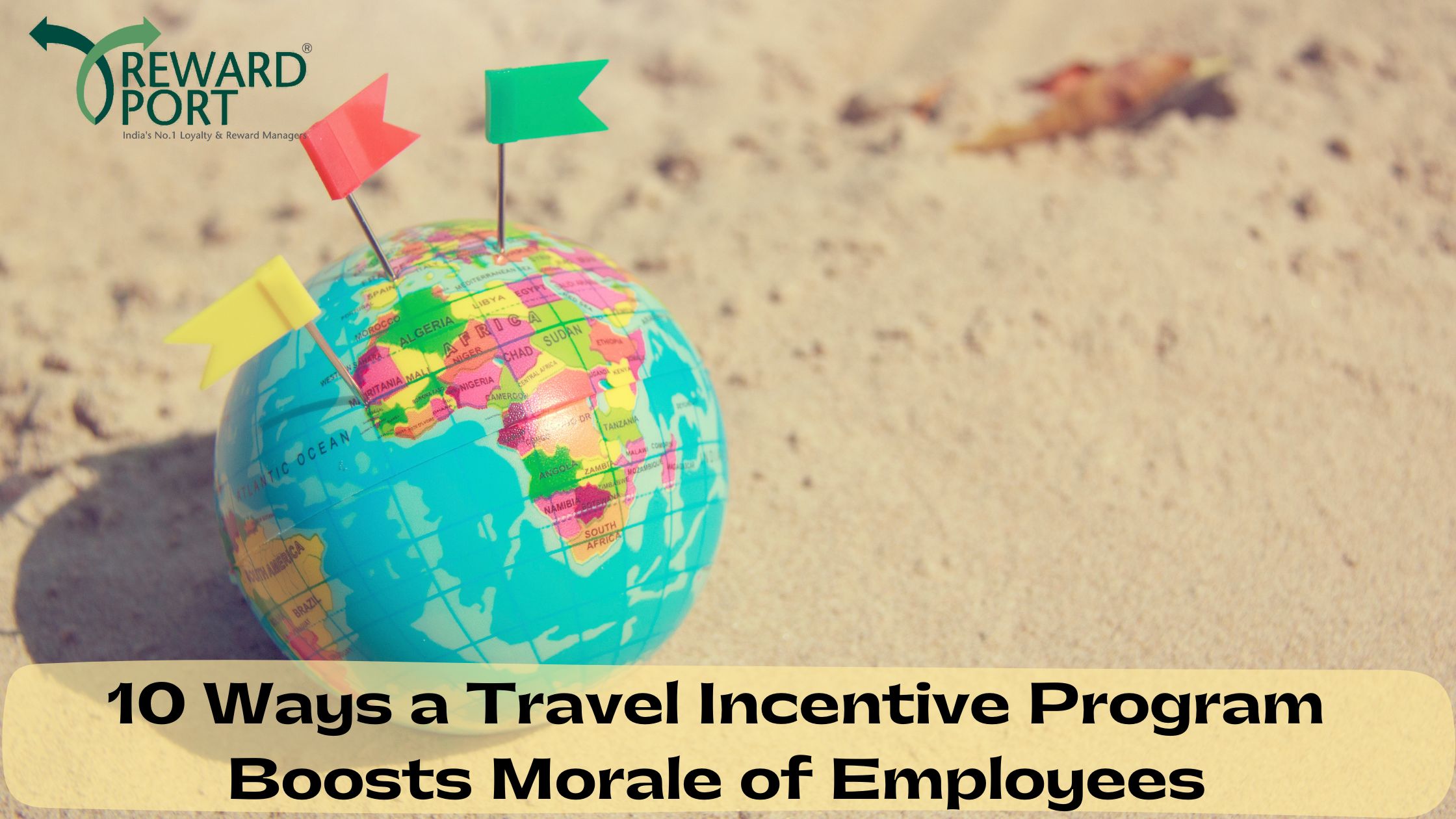Incentives are used by successful organizations to reward and motivate employees, customers, and other stakeholders to engage in certain behaviors and avoid others. Incentive programs boost innovation and revenue while lowering losses and expenses and reinforcing corporate culture.
One study of incentive travel trends discovered a 22% improvement in performance after implementing a new program, increasing to 44-48% for programs in place for more than six months. Another study discovered that companies with effective incentive programs had 31% lower voluntary turnover.
Businesses invest in rewards such as cash, gift cards, trophies, recognition, time off, professional development, trendy merchandise, and the most prestigious award of all, leisure travel, to gain a competitive advantage in their markets.
1. Travel incentive programs have a huge impact
Organizations in the United States spend more than $100 billion per year on incentive rewards. The most common rewards across all programs are gift cards (71% of organizations), merchandise (38%), award points (36%), and travel (30%). Eighty per cent of programs use multiple types.
The top goals for sales programs are to increase overall revenue (80% of programs), boost morale (76%), and improve productivity (58%).
When many participants are earning rewards, cash and gift cards are used to reduce administration. When buzz is more important, trendy merchandise and leisure travel are used.
The ultimate reward is solo travel. Although travel can be difficult to manage, it has a huge impact that no one forgets. Celebrity Cruises offers individual cruise gift cards and certificates to relieve planners of much of the administrative burden.
2. Increase your value through word of mouth
The most powerful advantage of tangible noncash rewards over cash and cards is the recognition value.
Tangible awards are prominently displayed. Everyone knows who and how they got them. They create anticipation before the awarding, social media buzz during the awarding, and an afterglow that lasts long after the awarding.
Winners will extol a luxurious resort or cruise experience they had—and the organization that made it possible—to any willing listener.
Whereas, bragging about a cash prize is less than successful in spreading the word.
3. Increase your motivation by increasing your desire
Tangible rewards, such as those provided by incentive travel programs, take up more mental space than cash and cards, making them feel more desirable despite being of equal value.
The added value of these awards translates into measurable increases in recipients’ effort, perseverance, and performance. More emotional attachment results in greater behavioral change.
Performance in the first round was comparable in one field experiment that followed consecutive sales contests, with one cohort receiving cash and the other receiving prizes. However, in subsequent rounds, the median sales results from prizes rather than cash were significantly better.
In laboratory experiments, participants who received tangible rewards produced higher-quality work with fewer errors than those who received cash.
4. The reciprocity effect boosts productivity and creativity
While cash and credit cards are considered transactional, tangible rewards feel more like gifts and are more social. They lead to more emotional connections.
Noncash rewards, such as cruise vacations, elicit appreciation and a desire to return the favor. Employees seek ways to respond to emotionally impactful rewards by increasing productivity and creativity when they associate them with the organization that provides them.
Such a reciprocity effect lasts far beyond the transaction because recipients remember the gift more frequently and fondly than they would a cash reward, resulting in feelings of greater value by their organizations and more positive workplace behaviors like attendance and engagement.
5. Increase employee retention by expressing gratitude
People frequently put in more effort for no pay (a social market) than for little pay (a monetary market). Simply acknowledging someone’s good work creates a human connection, which can spark a transformation.
Employees who already make a good living are more motivated by managerial praise and one-on-one time with leaders than by cash incentives, stock options, or even pay raises. Those who are most satisfied at work say their managers are excellent at providing feedback and recognition.
In contrast, nearly 80% of employees who quit their jobs cite a lack of appreciation.
According to one large study of customer service employees, fair, consistent, and timely recognition by managers and peers significantly improved employee behavior and customer experience. Employee recognition was found to be the most effective form of reward by a similar study of managers, improving retention, communications, sales, customer satisfaction, and teamwork.
Members of Fortune magazine’s list of the 100 Best Companies to Work For having 50% lower turnover and a 15-25% higher return on investment than other companies in their industries.
6. Employees can be attracted with incentives and recognition
Rewards and recognition have an impact on a company’s ability to attract talent and meet customer goals such as satisfaction, loyalty, and profitability. With unemployment nearing historic lows, the best organizations recognize that competitive rewards and recognition help attract better employees.
Tangible noncash rewards have more value than cash because they have personal meaning. The best travel incentive programs are designed to ensure personalized recognition. The more recipients enjoy and remember incentives such as luxurious vacations, the more they promote their organizations.
7. Use a tiered approach to reward top performers
Top-performing companies leverage their rewards programs more effectively than average-performing companies. Top performers have sales of $100 million or more, revenue or stock growth of at least 5%, excellent customer ratings, and employee satisfaction of 90% or higher.
Over time, incentive program design has shifted from rewarding only truly exceptional employees (exclusivity) to ensuring that many high-performing employees feel appreciated (reach). When designing incentives, top organizations prioritize reach over exclusivity.
Celebrity travel certificates can be tiered to help planners tailor awards, appropriately rewarding different groups of high-performing employees.
8. Attract all types of employees
Incentive programs, particularly travel programs, must cater to the personalities and desires of their intended recipients. In this way, they also instill an organization’s culture, succeeding to the extent that they reflect that culture’s values.
Incentive programs, particularly travel programs, must cater to the personalities and desires of their intended recipients. In this way, they also instill an organization’s culture, succeeding to the extent that they reflect that culture’s values.
There are five broad categories of incentive travelers:
- Culture enthusiasts
- Trendsetters
- Travelers in gold
- Practical vacationers
- Vacationers are valued.
9. Give culture enthusiasts the authentic experiences they seek
These visitors are looking for in-depth experiences. They have intellectual personalities, value new technologies, enjoy fine dining and wine, and have a strong influence on their peers. They can use their travel vouchers to sail along the Arabian coast, visit Angkor Wat, or dive into the Great Barrier Reef.
10. Make the ideal getaway for trend-setters
Your best influencers are self-assured, younger, more affluent, and technologically savvy. They reserve the suite, go to the spa, and work out in the gym. Shore excursions that promise new travel experiences are popular among trendsetters. They can use their travel certificates to explore Alaska’s massive glaciers, Europe’s iconic cities, or the far-flung tip of South America.
Conclusion
While most people equate the advantages of incentive travel with performance before the trip, numerous positive effects occur after the trip. Once the project is completed or the goals have been met, your employees can go on the trip and enjoy a well-deserved break from work while relaxing and having fun with their coworkers in a stress-free environment.
This break will help to put some distance between completed work and upcoming tasks, enabling your employees to return invigorated and ready to come back motivated and prepared.
RewardPort can help your enterprise devise and execute employee rewards and redemption programs. While it is simple to use, it also provides a unique concept to keep them involved with your company.





